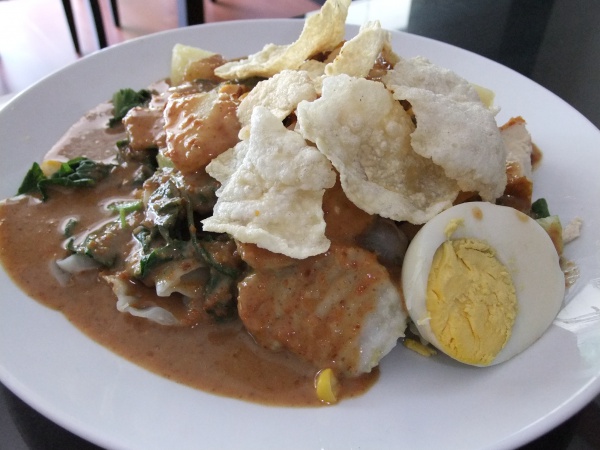Facts About Gado-gado
Gado-gado is a delightful Indonesian salad brimming with diverse flavors and textures. It features a mix of lightly boiled or steamed vegetables, hard-boiled eggs, boiled potatoes, fried tofu, tempeh, and lontong (a type of rice cake), all generously coated in a rich peanut sauce. Recognized in 2018 as one of Indonesia’s five national dishes, gado-gado stands as a testament to its widespread popularity and cultural significance.
The term "gado" or "menggado" means eating something without rice, while "gado-gado" translates to "mix-mix" aptly reflecting the dish's essence with its assortment of ingredients.
Gado-gado is ubiquitous across Indonesia, with each region contributing its unique twist to the dish. It is believed to have originated in the Sundanese region of Western Java. This beloved salad is a common sight at street food stalls, hawker centers, and restaurants, not just within Indonesia but also around the world.
The peanut sauce is undeniably the star of gado-gado. This captivating blend of fried crushed peanuts, palm sugar, garlic, chilies, tamarind, and lime creates a perfect balance of sweet, spicy, and savory flavors.
The vegetables in gado-gado can vary, but they often include blanched greens, boiled potatoes, cucumber, and fried tofu and tempeh. The dish is typically served with lontong or ketupat (glutinous rice cake), or steamed rice, and garnished with krupuk (crackers) and bawang goreng (fried shallot sprinkles).
Traditionally, the peanut sauce is prepared by grinding the ingredients with a pestle and a flat rounded stone to achieve the perfect consistency. This method ensures that every bite of gado-gado is packed with flavor and texture, making it a truly satisfying and unforgettable dish.

 Papua New Guinea
Papua New Guinea